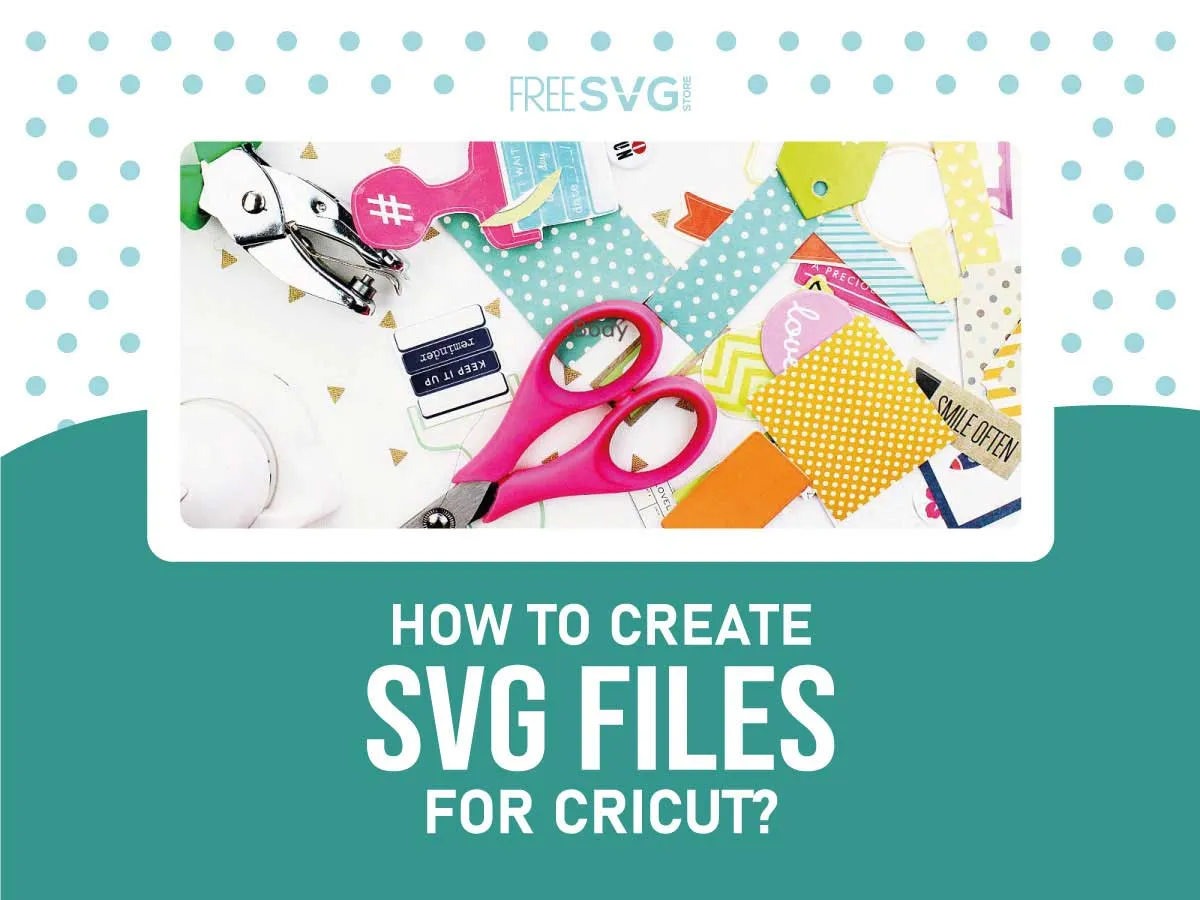Creating SVG files for Cricut involves using vector graphics software to design and save your artwork in the SVG (Scalable Vector Graphics) format. SVG files are widely used for Cricut cutting machines as they allow for high-quality scaling without loss of resolution.
How to Create SVG Files for Cricut?
Below is a step-by-step guide on how to create SVG files for Cricut:
Choose Vector Graphics Software:(How to Create SVG File) You’ll need a vector graphics software program to create and edit SVG files. Some popular options include Adobe Illustrator, Adobe InDesign, Adobe Photoshop, Inkscape (free and open-source), CorelDRAW, or Affinity Designer.
Design Your Artwork: Use the chosen vector graphics software to design your artwork. Keep in mind that SVG is a scalable format, so your design can be resized without loss of quality. Create your design on a canvas that matches the dimensions you want it to be when cut by the Cricut machine.
Use Simple Shapes and Paths:(How to Create SVG File) When designing your artwork, try to use simple shapes and paths, as these are easier for the Cricut machine to interpret and cut accurately. Avoid using complex filters, gradients, or effects that may not translate well to the cutting process.
Convert Text to Outlines:(How to Create SVG File) If your design includes text, convert it to outlines or paths before saving it as an SVG. This ensures that the Cricut machine won’t have font compatibility issues when cutting your design.
Set the Correct Document Size:(How to Create SVG Files for Cricut?) Make sure your document’s dimensions match the size of your design. In some software, this is referred to as the “artboard” size. You can usually set this when creating a new document or adjust it later in the document settings.
Group Elements: If your design consists of multiple elements, group them together. Grouping helps maintain the arrangement and positioning of the elements when you import the SVG into Cricut Design Space.
Save as SVG: Once your design is ready, save it as an SVG file. In most vector graphics software, you can go to “File” > “Save As” or “Export” and choose the SVG format. Make sure to select the appropriate options for SVG saving, such as including styles, fonts, and objects.
Upload to Cricut Design Space: Now that you have your SVG file, open Cricut Design Space on your computer. Go to “New Project” and then click on “Upload.” Follow the on-screen instructions to upload your SVG file.
Check and Adjust: After uploading your SVG, you’ll be able to see a preview of how it will be cut. Make any necessary adjustments to the size, orientation, or cutting settings as needed.
Send to Cricut Machine: Once you’re satisfied with the preview, connect your Cricut machine to your computer and follow the instructions to send the design to the machine for cutting.
That’s it! Now you know how to create SVG files for Cricut and can start making amazing projects with your cutting machine. Remember to experiment with different designs, colors, and materials to unleash your creativity!
FAQs on Creating SVG Files for Cricut
1. What is an SVG file, and why is it important for Cricut projects? (How to Create SVG Files?)
An SVG file (Scalable Vector Graphics) is a format that allows for scalable, resolution-independent graphics. For Cricut projects, SVG files are essential because they ensure that the design maintains its quality and precision regardless of its size when cut by the Cricut machine.
2. Which software can I use to create SVG files for Cricut? (How to Create SVG Files for Cricut?)
You can use vector graphics software such as Adobe Illustrator, Inkscape, CorelDRAW, or Affinity Designer to create SVG files for Cricut. These programs enable you to design, edit, and save your artwork in the SVG format.
3. Are there any specific guidelines for designing SVG files for Cricut?
Yes, when designing SVG files for Cricut, it’s best to use simple shapes and paths. Avoid complex filters, gradients, or effects, as they may not translate well to the cutting process. Additionally, convert text to outlines or paths to avoid font compatibility issues.
4. Can I resize my SVG design without losing quality when using Cricut?
Yes, one of the key advantages of SVG files is that they can be resized without any loss of quality. This feature allows you to adjust the size of your design as needed for various projects without compromising its clarity.
5. How do I upload an SVG file to Cricut Design Space?
To upload an SVG file to Cricut Design Space, open the software and click on “New Project.” Then, select “Upload” and follow the on-screen instructions to choose and import your SVG file from your computer.
6. Can I group elements in my SVG design for easier handling in Cricut Design Space?
Yes, grouping elements in your SVG design is highly recommended. Grouping helps maintain the arrangement and positioning of the elements when you import the SVG into Cricut Design Space, making it easier to manage and manipulate your design.
7. Are there any specific considerations for text in SVG designs for Cricut?
Yes, when using text in your SVG designs, remember to convert the text to outlines or paths. This ensures that the Cricut machine won’t encounter font compatibility issues, as the text will be treated as a vector shape.
8. What are some common mistakes to avoid when creating SVG files for Cricut?
Some common mistakes to avoid include using highly intricate designs, using non-vector images (like JPG or PNG), forgetting to convert text to outlines, or designing outside the designated canvas area.
9. Can I edit my SVG design in Cricut Design Space after uploading it?
Yes, you can perform basic edits to your SVG design in Cricut Design Space, such as resizing, rotating, or duplicating elements. However, for more extensive modifications, it’s best to edit the original SVG file in your chosen vector graphics software and re-upload the updated version.
10. How can I troubleshoot issues when my SVG design doesn’t cut correctly with Cricut?
If you encounter cutting issues, ensure that your design adheres to the guidelines for simple shapes and paths. Check the cutting settings in Cricut Design Space and make sure your material is loaded correctly and that the blade is sharp and properly calibrated.

